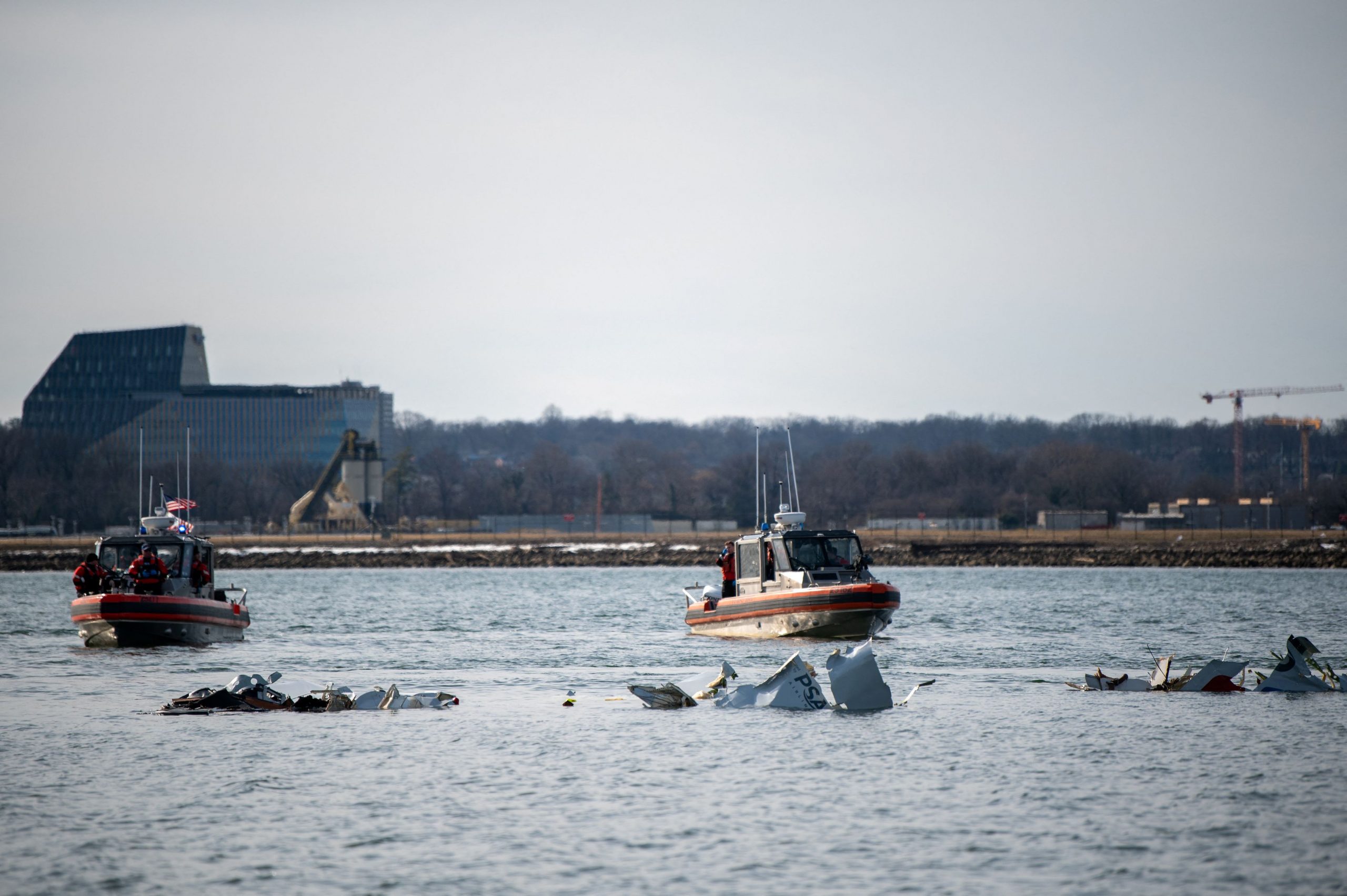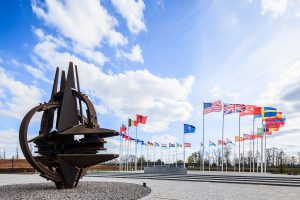More than 700 planes had already taken off and landed at Reagan National Airport on Wednesday when American Airlines flight 5342 approached it through one of the nation’s most congested air corridors.
Shortly before 9 p.m., the passenger jet collided in a fireball with an Army Black Hawk helicopter on a routine training mission, leaving no survivors.
As officials scramble to determine the cause of the crash, the catastrophe is drawing new attention to longstanding safety warnings about the increasingly busy airspace above the nation’s capital.
Reagan sits on just 733 acres of land along the Potomac River, across from downtown Washington and the military’s Joint Base Anacostia-Bolling. Space is so tight that federal regulators dole out takeoff and landing rights.
The airport’s convenience and close proximity to the Capitol have made it irresistible to Washington’s politicians. Over the years, lawmakers have lobbied to open access and add more flights, often to make quick jaunts to their home states easier. Last year, after a fierce debate over whether the airport could absorb more flights, Congress authorized more, which were awarded to five airlines proposing to fly to San Antonio, San Diego, Seattle, Las Vegas and San Francisco.
Adding to the crowded airspace are helicopters that crisscross the Potomac every day, many of them military flights from the Pentagon and other government agencies ferrying officials or other passengers and cargo around Washington.
Officials and commercial and military pilots have warned that the airspace leaves little margin for error.
“We’re dealing with an extraordinarily complex airspace system that has been complicated even worse by the addition of flights to National Airport,” said Keith Meurlin, a retired Air Force major general and head of the Washington Airports Task Force. “At what point is enough enough?”
Pilots have been complaining for decades about the presence of military and other aircraft around Reagan.
“I cannot imagine what business is so pressing that these helicopters are allowed to cross the path of airliners carrying hundreds of people!” one pilot wrote in a 2013 report filed to the Aviation Safety Reporting System, or ASRS, after a near-collision with a helicopter. “What would normally be alarming at any other airport in the country has become commonplace at DCA.”
In his Senate confirmation hearing Thursday, Army secretary nominee Daniel Driscoll referred to the disaster as “an accident that seems to be preventable,” adding that the Pentagon may need to rethink its training flights around an “airport like Reagan.”
A 2021 Government Accountability Office report found that 88,000 helicopter flights took place within 50 miles of Ronald Reagan Washington National Airport from 2017 through 2019. About 37% of those flights were conducted by the military, the report said.
The Black Hawk involved in the midair collision was carrying three Army aviators on a training mission, according to Pentagon officials. The pilot and instructor had a combined 1,500 hours of flight time between them, earning many of those hours in the very corridor they were flying on Wednesday night.
A third Army pilot on board was getting an annual check ride to determine whether he or she could keep flying the aircraft, according to the Army, which hasn’t identified the service members.
Doug Rice, a former American Airlines captain who landed many times at Reagan National, said helicopters in that airspace are restricted to flying 200 feet above the ground. On Wednesday, the plane and the military helicopter collided about 400 feet in the air.
The helicopter “was in the wrong place at the wrong time,” said Rice. “The regional jet was doing what it was supposed to do.”
Rice said he believed the flight from Wichita was correct on its landing approach. The pilots of the regional jet, he said, might not have seen the helicopter due to backlighting, and the aircraft’s collision-avoidance system would have less functionality under 700 feet. The soldiers flying the Black Hawk might have spotted the wrong plane, Rice continued, or there may have been some mechanical error with the helicopter.
Whatever the reason, Rice said, the passengers, crew and pilots on the American Airlines flight “got put in a box, and it wasn’t their fault.”
Over the years, the number of such flights has grown. The helicopter involved in the crash belonged to the 12th Aviation Battalion out of Fort Belvoir in Virginia, which is responsible for flying generals, cabinet secretaries, congressmen and VIP visitors to Washington at least once a day.
Army pilots have been involved in a number of air mishaps over the past year, including some involving Black Hawks. In fiscal year 2024, at least nine troops, one contractor and one civilian died in collisions involving Army aircraft, according to a January 2025 report.
Last April, one pilot reported coming dangerously close to a military helicopter while coming in to land. “Suggestion: Need to have better separation for DCA traffic on the river visual to the helicopter traffic that is flying up and down the river,” the pilot wrote.
Such warnings are nothing new. “Why does the tower allow such nonsense by the military in such a critical area?” wrote another pilot in 2006, according to records reviewed by the Journal. “This is a safety issue, and needs to be fixed.”
But Washington power brokers clamored to add routes. Some cities far from Washington were largely shut out, following a 1960s-era rule that limited how far planes could travel from then-National Airport. In turn, long-haul flights were shifted to newly built Dulles International Airport farther from the city, although exceptions have been made over the years.
The late Sen. John McCain (R., Ariz.), for instance, pushed for a nonstop flight from Reagan to Phoenix, though he personally avoided flying it to avoid the appearance he had pursued the flight for his own convenience.
Reagan National was designed for about 15 million passengers a year, but by 2023 its volume has grown to more than 25 million a year, and a daily average of 820 takeoffs and landings. To increase the number of flights, there was a steady “chipping away” at a Transportation Department rule that prohibited airlines from flying from Reagan to destinations beyond 1,250 miles, said Sen. Mark Warner (D., Va.).
While this led to complaints about the increasing number of flight delays, there were underlying safety concerns. “I’m thankful that there’s no loss of life, but it’s just plain unacceptable,” Warner said on the Senate floor in April, one day after a near miss between two flights when the Southwest and JetBlue planes nearly ran into each other as they crossed over the same runway.
Sen. Tim Kaine (D., Va.) beseeched his colleagues last April to stop adding more flights to the area.
“Some members of Congress view this package as an opportunity to jam even more planes for their own personal convenience into a runway at DCA that is already overburdened and can’t handle extra planes,” Kaine said, referring to Reagan National by its airport code. “The gamble is exactly the opposite of improving public safety.”
Despite the pleas of Kaine and Warner, the Senate authorized the FAA to increase flights by as many as 10 per day.
Write to Vera Bergengruen at vera.bergengruen@wsj.com , Jack Gillum at jack.gillum@wsj.com , Alison Sider at alison.sider@wsj.com and Gordon Lubold at gordon.lubold@wsj.com



